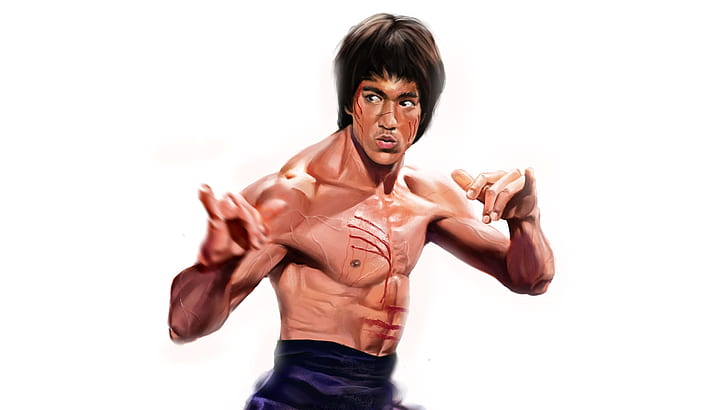Immerse yourself in a fascinating journey through time as we delve into the compelling world of Karate, exploring its rise from the big screen to becoming a staple in popular imagination. This exploration seeks to chronicle the evolution of this martial art form in cinema and pop culture, tracing its roots, its meteoric rise, and its firm establishment as a cultural icon.
🥋
From iconic Karate movies like ‘Enter the Dragon’ to ‘The Karate Kid,’ these films have not only popularized the martial art form but also played a significant role in shaping the public perception of Karate. They brought this ancient art form from the training dojos to our living rooms, making it a part of our daily conversations and fantasies. The impact and influence of Karate in cinema are undeniable, and we’ll discuss its extensive reach and evolution in the following segments.
🎬
Beyond the silver screen, Karate also found its way into other facets of pop culture, asserting its relevance and significance in shaping societal perceptions of self-defense, discipline, and mental fortitude. From video games to comic books, Karate has left indelible marks in various forms of entertainment and media, influencing generations of enthusiasts.
💥
As we turn the pages of this exciting narrative, we’ll delve deeper into how Karate has grown from a traditional Japanese martial art to an influential cultural phenomenon. This exploration promises to be a fascinating one, weaving together the threads of history, cinema, pop culture, and of course, the enchanting world of Karate itself. So, let’s embark on this journey, and unravel the captivating story of the rise and evolution of Karate in cinema and popular culture.
🌏
The Karate Evolution in Cinema
The rise of Karate in popular culture has been significantly influenced by its portrayal in cinema. With the advent of martial arts films in the 1960s and 70s, Karate was brought to the forefront, creating a unique fusion of entertainment and martial arts.
The Early Depictions
The early depictions of Karate in films were somewhat exaggerated and often lacked authenticity. Movies such as the James Bond film “You Only Live Twice” (1967), introduced western audiences to Karate, although the fighting scenes were more theatrics than actual Karate.
- “You Only Live Twice” (1967): Bond is seen practicing Karate moves, introducing western audiences to the martial art.
Karate Enters the Mainstream
The real breakthrough for Karate in cinema came with movies like “Enter the Dragon” (1973), starring Bruce Lee, and “The Karate Kid” (1984). These films portrayed Karate as a discipline that could be practiced by anyone and emphasized the philosophy behind the martial art.
The Influence of Bruce Lee
Bruce Lee’s films, though primarily showcasing Kung Fu, had a profound impact on the popularity of Karate. His portrayal of martial arts was more authentic and his films were commercially successful, setting the stage for more martial arts films.
- “Enter the Dragon” (1973): Bruce Lee’s performance in this film was instrumental in popularizing Karate.

The Karate Kid Phenomenon
The Karate Kid (1984), with its focus on character development and authentic Karate training, brought the martial art into mainstream cinema. The film popularized Karate among younger audiences, creating a surge in Karate schools across the United States.
- “The Karate Kid” (1984): This film brought Karate into mainstream cinema and triggered a surge in Karate schools across the United States.

Karate in Modern Pop Culture
Today, Karate continues to be a significant part of pop culture, thanks to films like “Kill Bill” (2003) and series such as “Cobra Kai” (2018-present). These productions continue to portray Karate as a serious discipline, reinforcing its status in popular culture.
Recent Depictions
Recent films and series have continued to explore the world of Karate, offering different perspectives on the martial art. From the highly stylized fight sequences in “Kill Bill” to the rivalry between dojos in “Cobra Kai”, Karate continues to fascinate audiences worldwide.
- “Kill Bill” (2003): The film’s stylized fight sequences drew heavily from traditional Karate techniques.
- “Cobra Kai” (2018-present): This series continues the Karate Kid saga, exploring the rivalry between two Karate dojos.
In conclusion, the rise of Karate from the big screen to popular imagination is a testament to the martial art’s appeal and the power of cinema. The authentic and engaging portrayals of Karate in films have helped popularize the martial art, leading to its widespread practice and recognition worldwide.
Conclusão
In conclusion, the ascension of Karate from the big screen to popular culture is undeniably intertwined with the evolution of cinema. The journey of Karate in movies, from exaggerated depictions in films like “You Only Live Twice” to more genuine portrayals in “Enter the Dragon” and “The Karate Kid”, has not only introduced and popularized this martial art in the West, but also emphasized its philosophy and discipline. Influential figures like Bruce Lee have played pivotal roles in cementing Karate’s status in popular culture. Contemporary productions like “Kill Bill” and “Cobra Kai” continue to carry the torch, exploring diverse aspects of Karate and captivating audiences worldwide. This sustained interest in Karate, facilitated by cinema, has led to its widespread practice and respect, solidifying its place in pop culture. The story of Karate’s rise testifies to the power of cinema in shaping perceptions and influencing trends, demonstrating the profound impact visual storytelling can have on popular culture.


